Travel and Culture: Ávila, the church of San Vicente and the cenotaph of the Holy Martyrs
'Give me artificial flowers -gloria of metal and enamel-
that neither wither nor rot, with shapes that do not age.
Flowers from wonderful gardens, from another world
where contemplations, styles and knowledge dwell ... '.
[Kavafis]
Even considering the ingenuity of the history of persecution and martyrdom, as stated by José María Azcárate (1), one of the great Spanish theorists of art in general and Gothic in particular, there is no doubt that the cenotaph of the Holy Martyrs of the basilica church of San Vicente, in Ávila capital, is a small masterpiece. It is not the only one, of course, but probably one of the few that have practically remained unscathed until today, with the incentive to preserve, little less than unalterable, its beautiful original polychrome.
Thanks to this, we can possibly observe -among many others-, a detail that, without being exclusive or singular, does not lack, however, a certain intentionality: the hair and the golden beard of the Christ in Maiestas, who dominates, as Pantocrator , one of the sides of a cenotaph that, comparatively speaking, would resemble on a large scale, those dollhouses, miniaturists and handicrafts, which were so successful until relatively modern times and that still, as a retrospective or vintage vision, continue to generate ideas for toy factories, real swords of Damocles for a country that always stood out for its magnificent artisan guilds.
Policies and economies apart - although I can not help but think of certain comparisons with the Grail, insofar as it gives but also takes life - although the work could be described as anonymous at first, however and based on its style, there is who sees the hand of Fruchel himself - Magister, possibly of Frank origin to whom at least the first phase of the nearby cathedral is attributed - or of some disciple of his workshop. Perhaps that explains, in part, the aforementioned Aryan characteristic of the Christ - I think of that other Christ two beards dourada, venerated by the pilgrims in the church of Santa Maria de Fisterra or his replica in the cathedral of Orense, which arrived to the Costa da Morte, beyond the seas-, as well as the shape of the mandorla, an authentic Vesica Pisces with an unmistakable aspect of a seashell - let's not forget that Ávila is a pilgrim and pilgrim city and that even the Basilica of San Vicente it has compostelanas influences in its structure, as it could be the bifurcated cover of the west -, mythological detail restored in the Renaissance by Bottichelli, in his famous work the Birth of Venus.
Enigmatic could also be considered, without forgetting, of course, the probability of adaptation to space, the question of the choice of the artist of the lion and the ox -symbols of the Mark and Luke Evangelists-, to the detriment of the eagle and the angel or man , which would represent Juan and Mateo, respectively. Does this detail offer us any key ?. It is possible that yes, but it does not have place here for a deep debate on symbolism, although yes to remember that these figures of the lion and the ox are not as antagonistic as they can seem a priori and they are located, faced and with certain profusion, in crowd of thresholds of Romanesque temples, although it is certain that sometimes, they are mixed with the symbolic figures of the other two evangelists here supposedly discarded.
Another characteristic, and perhaps the most charming and at the same time known, is the image -located in a way that may not be casual, in the opposite frontispiece-, which shows, apart from Adoration, the dream of the Magi. Would this provision offer a key: birth-death-rebirth ?. On the other hand, the legend of martyrdom and dismemberment of the martyred saints Vicente, Sabina and Cristeta also offers us clues that, far from being naive, as Azcárate affirms, they not only introduce us to archaic rites and myths, but also, they provide information about that trembling literalness with which the Catholic Church politicized and at the same time demonized the ancient places of pagan worship and by default, its practitioners.
One of the most aberrant examples of how sometimes Art can be an instrument for media and religious purposes, we would find it in the painting made towards the year 1622 by Juan Andrés Ricci de Guevara, currently exhibited in the cathedral of Cuenca, which shows the martyrdom - or dismemberment - of San Serapio, a theme and name that, due to its special connotations, will be played later.
Although few have actually survived, it can still be affirmed that this type of cenotaphs was, after all, quite common, being located, generally, in places of special pre-Christian cultural roots, being able to cite, as an example, the mausoleum of Santa Mariña, in the church of the Ourense town of Santa Mariña de Augas Santas, place of passage of a branch of the Way of Saint James, of ancient and strong Celtic presence or the small cenotaph that is still conserved in the church Soriana de los Santos Mártires, in Garray, located a few meters away from the ruins of Numancia, where the replicas of the heads of the saints had always been kept, until their transfer to the parish church of San Juan Bautista.
Either way, the cenotaph of the Holy Martyrs of the basilica church of San Vicente, is a work worthy of admiration, that should not be missed Art lovers in general.
Bibliography:
(1) José María Azcárate: 'Gothic Art in Spain', Ediciones Cátedra (Grupo Anaya), 5th edition, Madrid, 2010, page 142.
Related movie:
NOTICE: originally published on my blog ARTE, MITOS Y ARQUETIPOS. Both the text, photographs, and video (except music, reproduced under a YouTube license) are my exclusive intellectual property. The original entry, where you can check the authorship of juancar347, can be found at the following address: https://artemitosyarquetipos.blogspot.com/2017/02/el-cenotafio-de-los-santos-martires-de.html
@juancar347
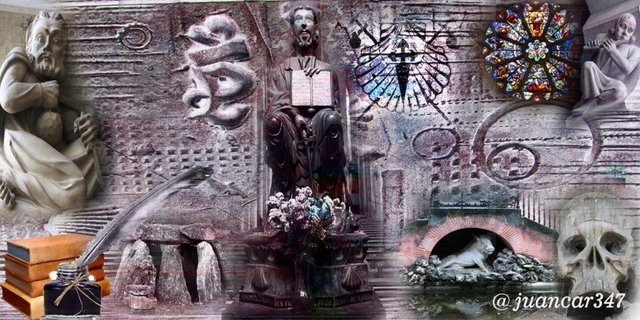
designed by: @txatxy
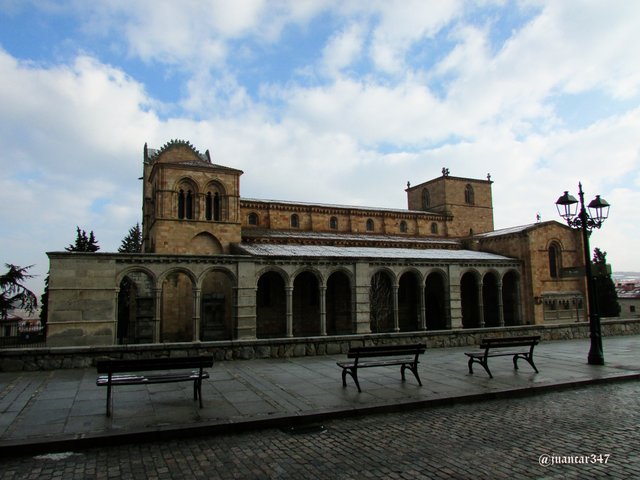
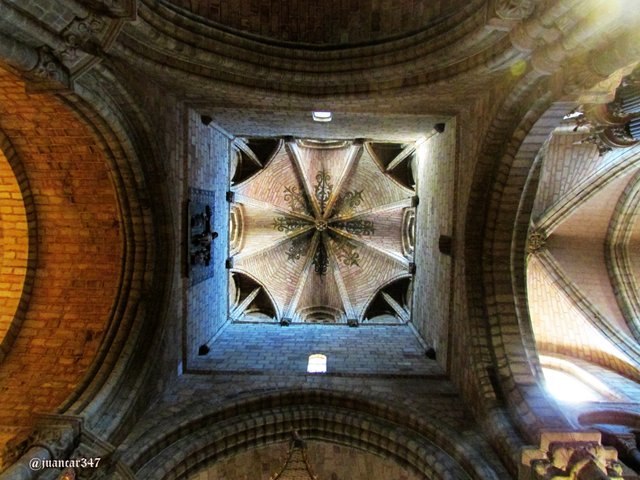
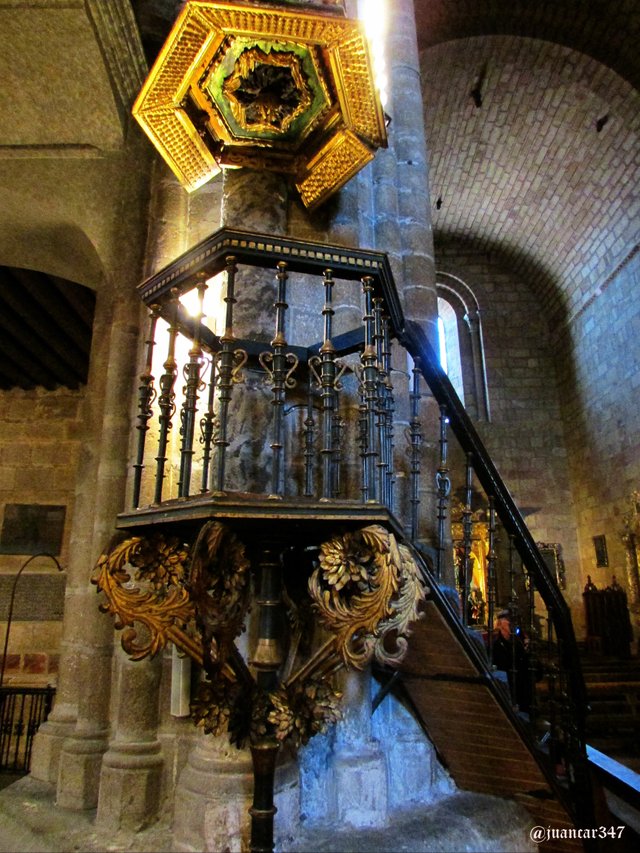
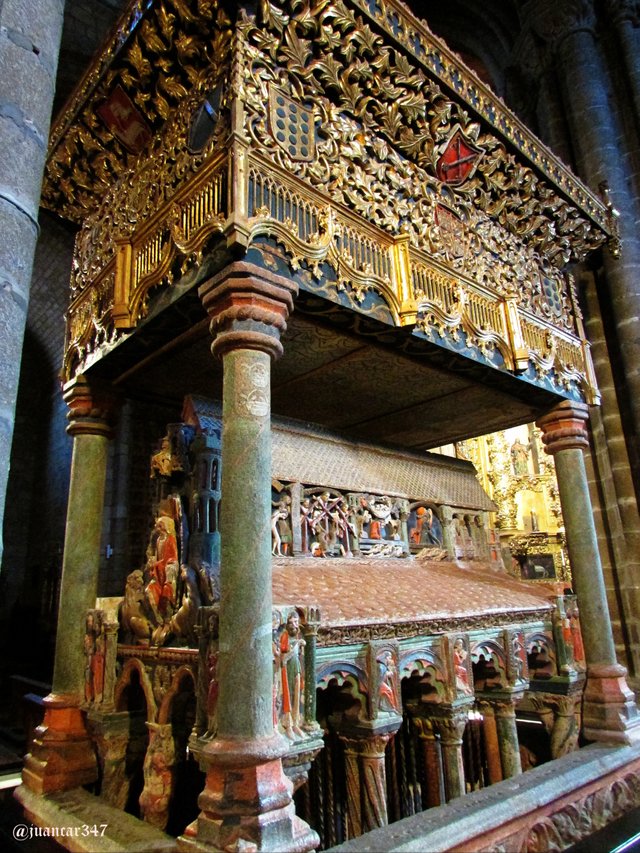
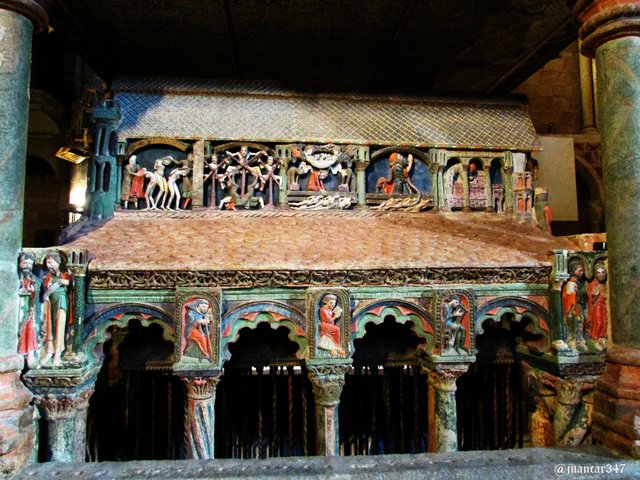
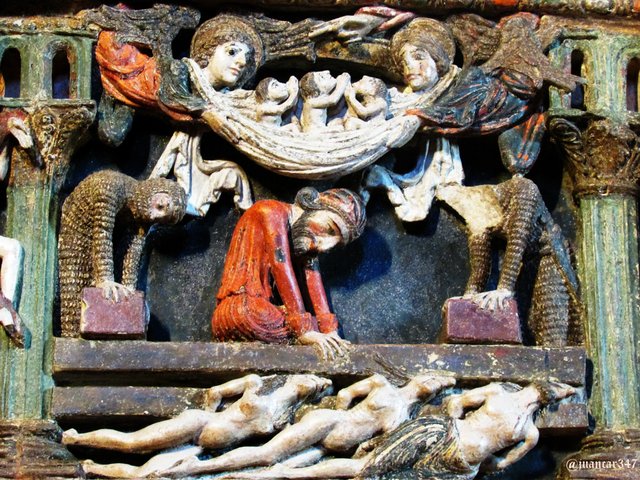
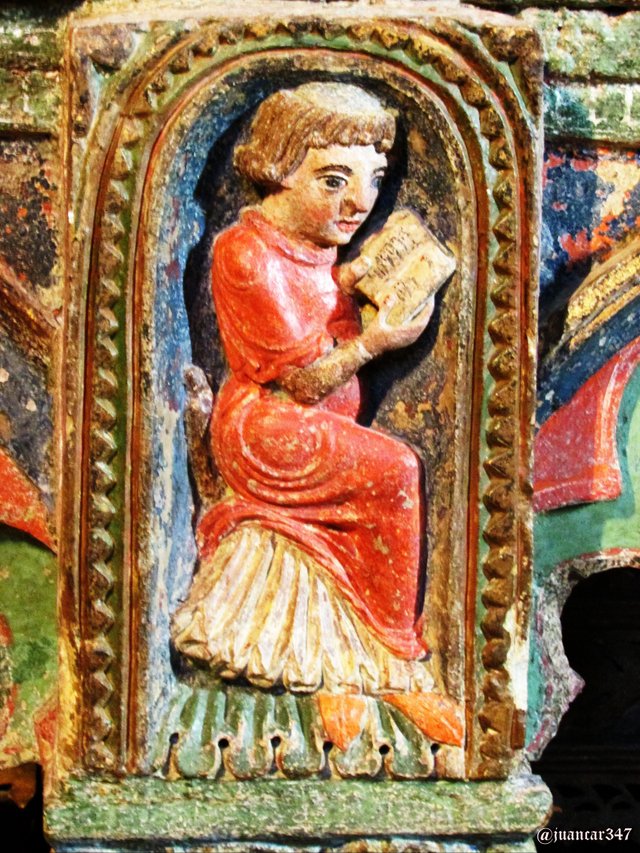
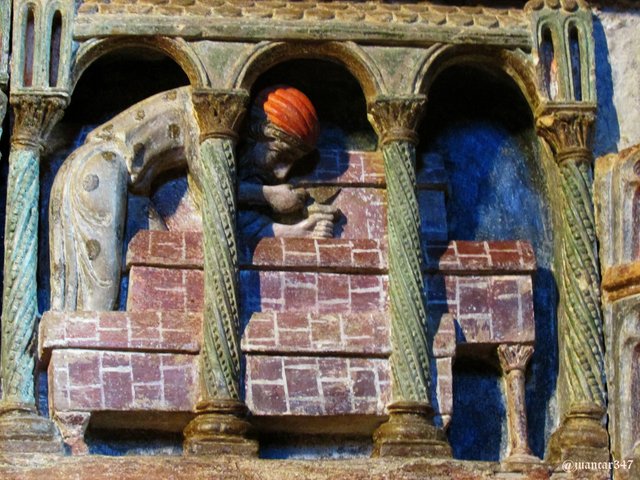
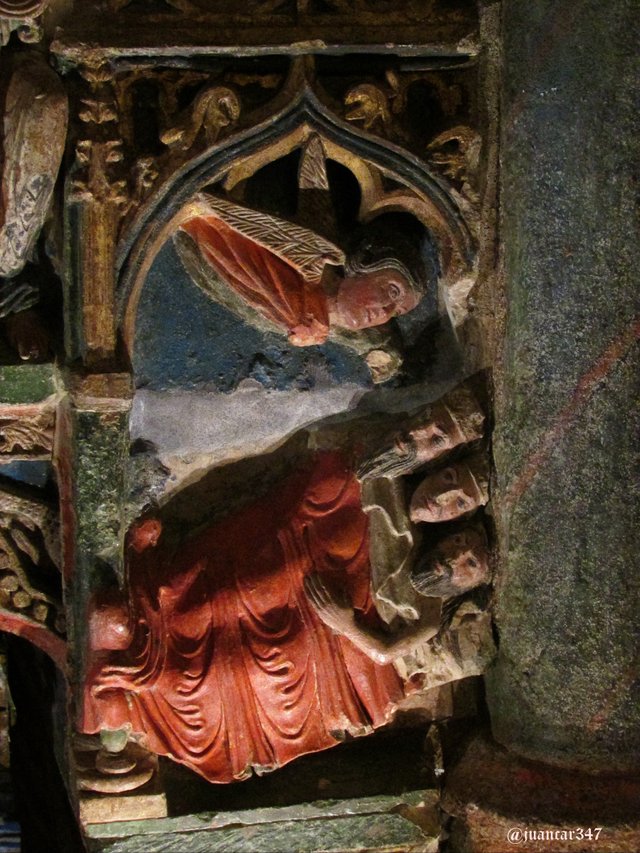


.jpg)
Wow what amazing architecture and wonderful details on the art pieces. It’s just amazing and I would be honored to be able to see them in person. Thank you for sharing this great post!! Truly truly great 👍🏻 ☺️
My gratitude for such a nice comment. I'm glad that you liked it and that you know how to admire the beauty it contains. regards
You are very welcome! ☺️
Thanks
😊
very nice architectural place ! this is a great art!
A very particular art, which follows the patterns of the great Romanesque landmarks of santiaguista architecture
Amazing colour! Magical place.
Thank-you
Wow. This is a beautiful post! Nice shots & information. Very good work juancar347! Cheers!
Thank you very much for your kind comment. Best regards
Congratulations, Your Post Has Been Added To The Steemit Worldmap!
Author link: http://steemitworldmap.com?author=juancar347
Post link: http://steemitworldmap.com?post=travel-and-culture-avila-the-church-of-san-vicente-and-the-cenotaph-of-the-holy-martyrs
Want to have your post on the map too?
Thanks
Unas fotografías encantadoras, @juancar347.
Muchas gracias